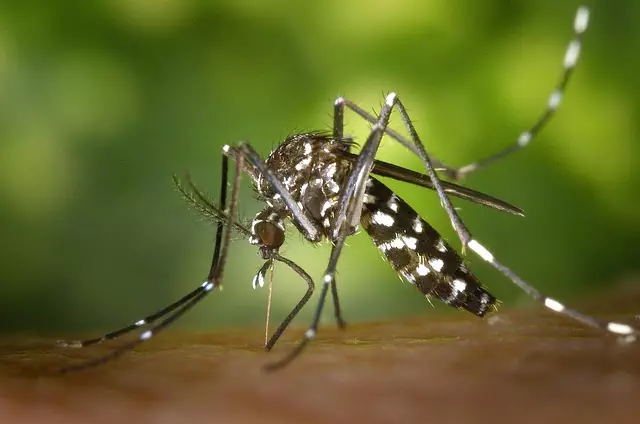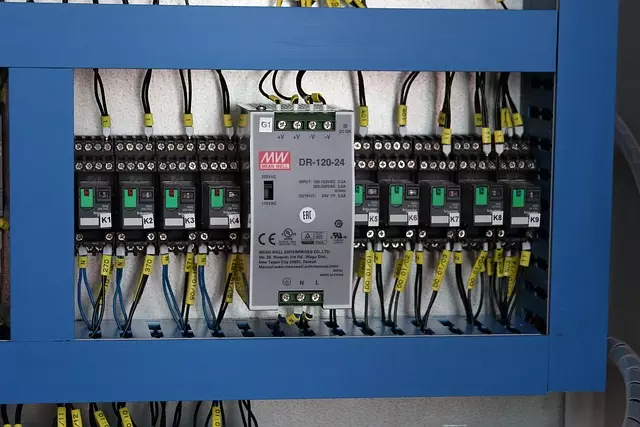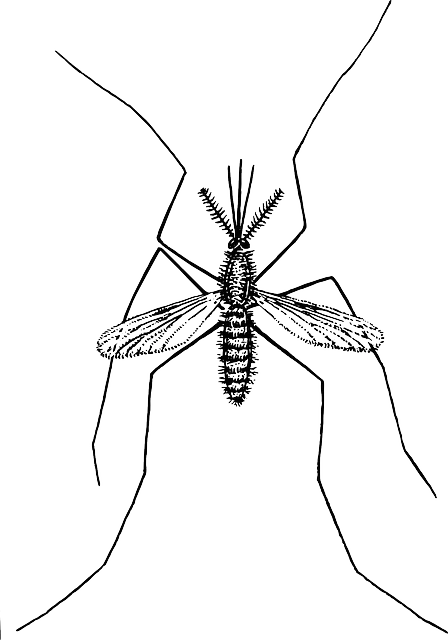Mosquitoes pose significant health risks during warm months, driven by environmental factors like rainfall and temperature. Effective mosquito control requires understanding their life cycle and implementing strategies such as eliminating standing water sources, using repellents, traps, and insecticides, and adopting integrated pest management (IPM) techniques. Modern technologies like GPS-enabled drones and smart sensors enhance precision and reduce environmental impact. Natural repellents offer an eco-friendly alternative, though their efficacy varies. Tailored strategies targeting specific areas and behaviors are crucial. Community programs combining IPM, education, and natural predators significantly decrease mosquito populations. Preventive measures like proper sanitation, repellent use, and screen maintenance also play vital roles in effective mosquito control.
Mosquitoes are not just pesky insects; they pose significant health risks, transmitting diseases that affect millions globally. Effective mosquito extermination is crucial for public health and quality of life. This comprehensive guide explores various mosquito control methods, from understanding their behavior and breeding patterns to modern technologies, natural repellents, targeted treatment strategies, community-wide management programs, and preventive measures. By leveraging these approaches, we can significantly reduce mosquito populations and minimize the risk of disease transmission.
Understanding Mosquitoes: Behavior and Breeding Patterns

Mosquitoes are more than just a nuisance; they’re tiny creatures with complex behaviors that directly impact our health and well-being, especially during the warmer months. Understanding their behavior and breeding patterns is crucial for effective mosquito control. These insects breed in standing water, making them highly dependent on environmental conditions like rainfall and temperature. Adult mosquitoes typically live for 1-2 weeks, during which they seek out hosts for blood meals, often humans. Their attraction to certain scents and heat signatures makes them particular pests, especially at dawn and dusk when they are most active.
Knowing their life cycle—from egg to larvae to pupae to adult—is vital for prevention. Removing or treating standing water sources like buckets, flower pots, and stagnant ponds can significantly curb mosquito populations as these areas serve as breeding grounds. Additionally, utilizing mosquito control products, such as repellents, traps, and insecticides, can further aid in managing their presence, ensuring a more comfortable outdoor experience during the warmer seasons.
Traditional Mosquito Control Methods

Traditional mosquito control methods involve a range of techniques that have been used for decades, primarily relying on chemical applications to eliminate or repel mosquitoes. One common approach is the use of insecticides, which can be sprayed in areas where mosquitoes breed and rest. These chemicals are effective in reducing mosquito populations but may also pose risks to non-target organisms and the environment if not used properly. Another traditional method is the installation of screens on windows and doors to physically prevent mosquitoes from entering indoor spaces. While this offers some protection, it doesn’t eliminate mosquitoes entirely.
Additionally, larvicide treatments are employed to target mosquito breeding sites, such as stagnant water in ponds or buckets. These biological control methods aim to disrupt the mosquito life cycle by killing larvae before they mature into adult flies. However, traditional practices often require repeated applications and may not fully address the complex nature of mosquito ecology. As a result, many modern mosquito control programs are adopting integrated pest management (IPM) strategies that combine these traditional techniques with newer, more eco-friendly approaches to achieve long-lasting and effective mosquito control.
Modern Technologies for Effective Extermination

In today’s digital era, modern technologies have revolutionized mosquito control methods, offering more precise and eco-friendly solutions than ever before. One notable advancement is the use of GPS-enabled drones equipped with natural repellents or insecticides. These drones can efficiently target specific areas infested with mosquitoes, minimizing the need for chemical applications over vast landscapes. This technology ensures that only targeted zones are treated, reducing potential environmental impact and limiting exposure to other insects or wildlife.
Additionally, smart sensors and data analytics play a crucial role in mosquito control. These innovative systems monitor environmental conditions, such as humidity and temperature, which heavily influence mosquito breeding patterns. By analyzing real-time data, authorities can predict and prevent mosquito-borne disease outbreaks more effectively. This proactive approach to Mosquito Control allows for better resource allocation and tailored strategies, ultimately fostering healthier environments and safer communities.
Natural Repellents and Their Efficacy

Natural repellents have gained popularity as an eco-friendly approach to mosquito control, offering an alternative to chemical pesticides. Essential oils like citronella, lavender, and peppermint are known for their ability to deter mosquitoes due to their strong scents. These natural compounds can be found in various forms, such as candles, sprays, or diffusers, and are often considered safer and more environmentally friendly options. Studies have shown that certain plant-based extracts possess effective insecticidal properties against mosquitoes, providing a sustainable solution for mosquito management.
While natural repellents are generally less harmful to humans and the environment, their efficacy can vary. The effectiveness of these solutions depends on factors like concentration, application method, and environmental conditions. Some natural compounds may require higher concentrations or repeated applications to achieve comparable results to synthetic insecticides. However, with proper usage and a combination of different natural methods, it is possible to significantly reduce mosquito populations and create an uncomfortable environment for these pests without resorting to harsh chemicals.
Targeted Treatment Strategies for Specific Areas

When it comes to mosquito extermination, a tailored approach is often the most effective strategy. Different areas within a property can require distinct treatment methods due to varying environmental factors and mosquito behavior. For instance, standing water in buckets or flower pots is a breeding ground for mosquitoes, necessitating targeted treatments in these specific locations. In contrast, mosquitos resting in tall grass or shrubs may require different insecticides or repellents compared to those flying around outdoor dining areas or recreational spaces.
Implementing mosquito control measures should involve a combination of prevention and elimination tactics. Regularly emptying water containers, installing mosquito traps, and applying appropriate insecticides can significantly reduce mosquito populations. Targeted treatments, such as spraying in hard-to-reach areas or using specific lures, further enhance mosquito control efforts. By understanding the unique needs of different spaces, homeowners and professionals can develop comprehensive strategies to create an outdoor environment that is less hospitable to mosquitoes.
Community-Wide Mosquito Management Programs

Many communities are now adopting Mosquito Control programs as a collaborative effort to manage and reduce mosquito populations. These community-wide initiatives involve a combination of strategies, including source reduction, biological control, and chemical interventions. By educating residents on proper waste disposal and eliminating standing water—known breeding grounds for mosquitoes—local governments can significantly decrease mosquito habitats.
Additionally, some programs introduce natural predators like fish and bacteria to target mosquito larvae. This eco-friendly approach ensures better Mosquito Control while minimizing the environmental impact of chemical pesticides. Such integrated pest management (IPM) strategies not only reduce the overall mosquito population but also foster a healthier, more sustainable community.
Preventive Measures to Avoid Infestations

Preventing mosquito infestations is a crucial aspect of effective mosquito control. Starting with proper sanitation is key; eliminating standing water around your property significantly reduces breeding grounds. Mosquitoes breed in stagnant water, so regular cleaning and drainage of items like buckets, flower pots, and old tires can make a big difference. Maintaining a well-landscaped yard with trimmed vegetation also helps, as it reduces hiding spots for mosquitoes.
Additionally, using mosquito repellents and screens is an essential preventive measure. When outdoors, applying DEET or other FDA-approved insect repellents can keep mosquitoes at bay. Installing fine-mesh screens on windows and doors ensures that these pests cannot enter your living spaces. Regular inspection and maintenance of these screens are vital to prevent any gaps that may allow mosquitoes entry.
